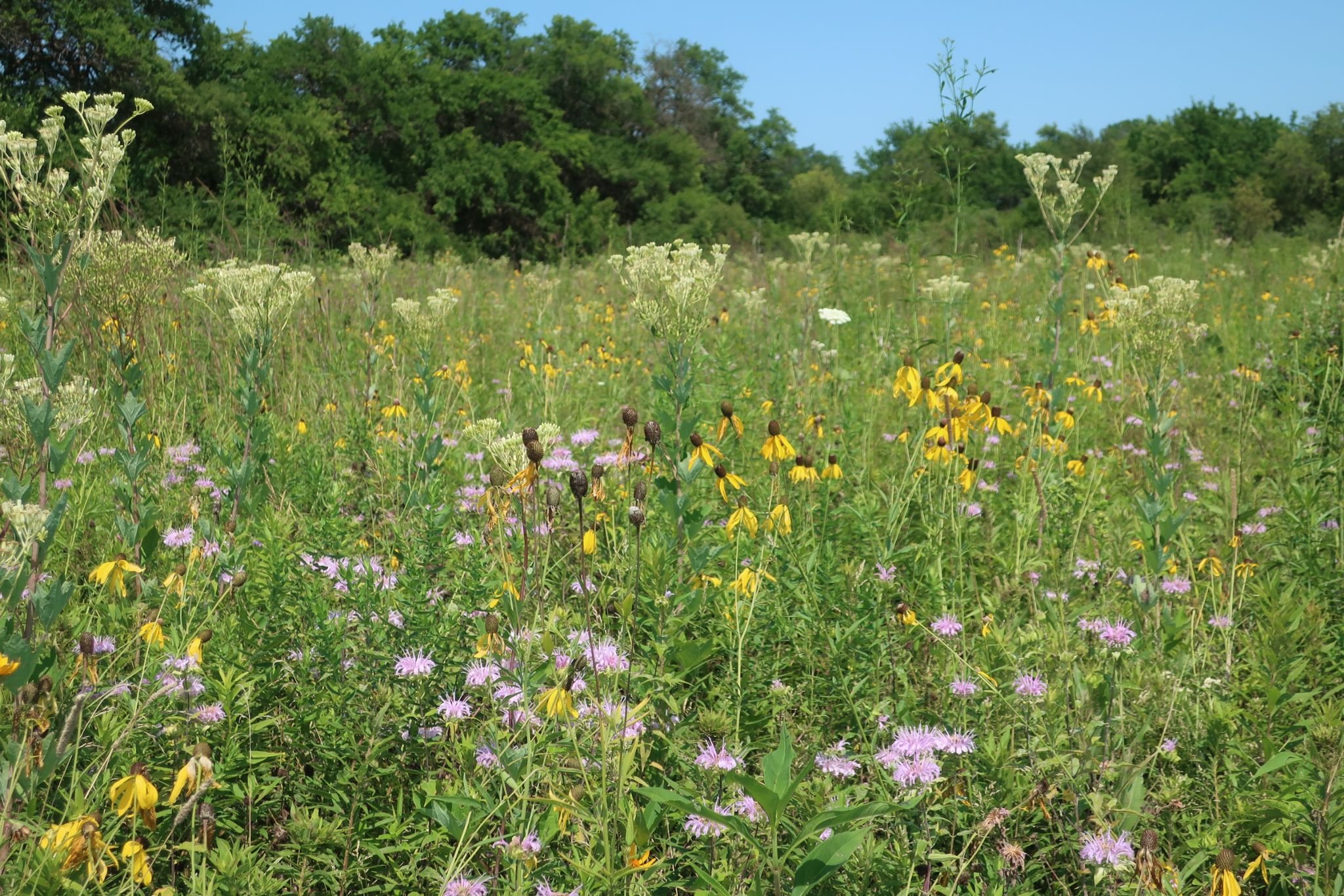
Farm to Forb
Some time ago there was a great strip of grassland splayed beautifully across much of North America. The beautiful chaos of Great Plains was wiped clean to install a grid of plain, lifeless crop and rangelands—they benefit us by “supplying” beef—not without the abuse of watersheds, pillaging of Native lands, desertification of rich soils, eutrophication of gulfs and exacerbation of climate change! How does that benefit humanity?
These beautiful grasslands were ripe with thousands of species living in harmony; unfortunately, not only did the first colonizers destroy this habitat, but we too are currently destroying it: "10 million acres of grasslands were lost between 2016 and 2020, and another 1.8 million acres were lost in 2020 alone—plowed primarily for row crop agriculture", as reported by the World Wildlife Fund. This is the sad truth of our day, and yet who among us are discussing this tragedy? Farm to Forb hopes to see more of the diversity observed at Midewin National Tallgrass Prairie, as captured below.
Farm to Forb is an initiative devoted to the restoration of farmland from centuries of monoculture crop growth back to native midwestern prairie.
-
A forb is a herbaceous flowering plant which is not a grass. We use this term in ecology, and it makes for the perfect title of our prairie restoration project.
-
No, our target farms are those whose usage is not beneficial to ecological systems, human and non-human.
Illinois: The Prairie State?
Prior to settlement, more than 60% of Illinois, approximately 22 million acres, was covered with prairie. In a 50-year span, this number astonishingly decreased to 2,000 acres, less than one-hundredth of one percent of the original. Romantic American writers have long described the great glory of our coasts, mountains, and forests, but the poetry of the prairies is missing from the American psyche because, of course, the prairies themselves are missing (for the simple reason that they are fertile and easy to till). Is the Illinois’ title as The Prairie State anything more than colloquial?
Prairie Ecosystems
There are certainly aesthetic reasons to devote great effort to restoring some of this nation’s prairies, but there are also solid ecological ones (i.e., carbon storage, sustaining biodiversity, etc.). A given acre of native grassland sequesters as much or more carbon from the atmosphere than a comparable amount of forest, fosters the life of billions of beneficial microorganisms, offers habitat for rodents and serpents, and provides food for pollinators like bees and birds.
Ideally, we will be able to restore large, continuous and diverse parcels of prairie — seeing as certain species, such as the Northern Harrier, aren’t likely to benefit from a prairie smaller than 1,000 acres. However, smaller parcels still prove beneficial to the soil microbiome, fungi, rodents, small birds and the atmosphere. When we can, we will elect to work on land which has the potential to one day serve as a home for a greater array of species, including the likes of the Northern Harrier and the endangered Prairie Chicken. In this way, we are working to restore and investigate the functions of the prairie ecosystem from the soil to the sky.

Timeline
We are currently restoring a nine-acre parcel in Tampico, IL, which has suffered from generations of corn and soy growth:
Rotated between organic corn and soy from 2014 to 2023.
Assumed land steward role in January 2024
Former Farmer cut hay in May and August 2024
Soil sample taken to lab in November 2024
Ongoing soil testing will be performed to measure the change in composition over time.
The soil test results indicate fairly poor soil; the organic matter rate of 3.2% is relatively low and so too is the estimated nitrogen release. Frequent testing of these key indicators should demonstrate the efficacy of our work.
Goals
While the biggest picture goal ought to be to entirely restore the former 22 million acres of Native Illinois Prairie, we aim to convert 1,000 acres of Illinois monotypic farmland back to prairie.
Consider how prairie restoration impacts the entire ecosystem, from the soil to the sky.
Study how the ecosystems change over time as a function of parcel size, species diversity, geography, and other factors.







